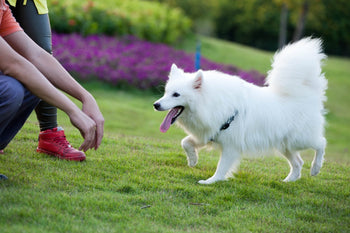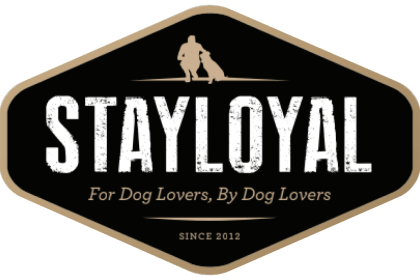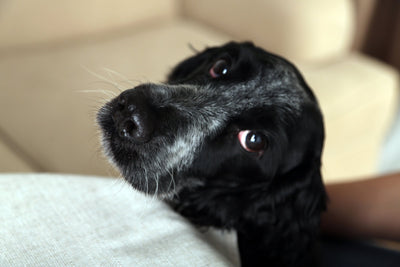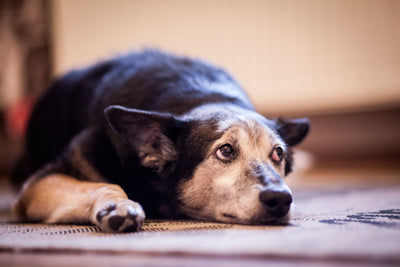The Secret To Making your Dog Come EVERY Time You Call!

Teaching a dog to come is very important. It can save you time and frustration when you need your dog to come inside so you can leave for work and they just don’t want to. It can also save their life, like if they are running toward the street, for example.
But “come” is a very boring cue for your dog. In most cases it means the end of the fun they were having. Maybe it’s time to leave the dog park or come in from the yard. Maybe you are calling them to come because they are getting into something they shouldn’t, like digging under the fence. These are just a few reasons why many dogs do not come when their owners call.
Common Owner Mistakes That Ruin a Dog’s Recall
Of course, your wandering hound is not solely to blame if he decides not to come. There are many mistakes we humans make that poison our come cue. Here are a few of the big ones:
Calling them to us and then punishing. If someone called you to them and then scolded you, would you run to them happily? No, and neither will a dog. No matter how mad you are, never call your dog and then scold them.
Repeating the cue. Do you sit there and say “Come” (or your dog’s name, “Here”, whatever word you use) over and over until your dog decides to finally saunter over? You are teaching your dog that he doesn’t have to come to that first word. In fact, for many dogs what ends up happening is they see the cue as “come, come, come,” and won’t respond until you have said it that many times (or however many times you have gotten in the habit of calling out). From now on, you will need to say it that many times before he responds.
Calling them for something they hate. It’s easy to want to call our dog to us and then give them a bath, groom them or trim their nails. But if your dog hates those things, all you are really doing – in their mind – is punishing them for responding to your cue. For things your dog dislikes, it’s best to just go get them rather than risk ruining your cue.
Now that you know what NOT to do, here are a few games that will strengthen your dog’s Come cue.
Some Great Games To Teach a Good Recall!
The key to these games is to make running to you the best thing ever. So, that means you should act excited and happy every time your dog comes to you during these games and give them lots of praise and attention when they respond promptly to your cue. Start with no distractions and then as your dog gets better start including new smells and people in the area.
Note: If you have already made some or all of them mistakes listed above, you may find it’s easier to just start over teaching your come using a NEW CUE, rather than try to fix the old one.
Puppy Ping Pong- This requires two or more people. Stand facing each other like you would to play catch. Start out fairly close together, maybe just a few feet depending on the level the dog is at. With an easily distracted puppy, definitely start close. Take turns calling the dog to you. Be sure to have a “party” when the dog comes. You can use verbal praise, petting, treats or toys. After a few second “party” the other person calls the dog back. Most dogs really love this game! You can add more people as your dog gets better at it.
Hide ‘n’ Seek. This is just like the game you used to play when you were young. Distract your dog with some kibble or a toy on the floor and then hide. At first, make it fairly easy for your dog to find you by staying in the same room or hiding behind a nearby tree. Then call your dog. For most dogs, suddenly realizing you have disappeared will make them wonder “where did she go?” and they will quickly seek you out. Remember, big party when they find you. Choose trickier hiding spots as the dog gets better at finding you. You can also add people and have him find each in turn as they call him.
Catch and Release. This is for those dogs who have learned that Come means all the fun is stopping. Maybe you try and call your dog at the dog park or the beach when it’s time to leave and they run in the opposite direction, knowing you are calling them to go home. This game is going to fix that. Call your dog to you and then reward them for coming. Be sure you physically catch your dog. Put your hand on their collar, leash them up, etc. Then, release them to go play again. You should use a cue to do this, so they understand that you are giving them permission to leave you again. You can use the cue you must release your dog from his stay, or another one such as “go play.” If you do not use a release cue, your dog may learn that Come means “run to my owner, get a reward and sprint off again.” That is definitely not what you want.
Note: How to encourage a dog that won’t come
· Get down closer to the ground in an inviting stance, arms open, crouched or kneeling
· Turn slightly away from the dog, avoiding eye contact (especially for shier dogs)
· Make silly noises (some dogs get their interest peeked and want to investigate)
· Pat your legs
· Turn and run away (many dogs love to chase, and I find this works best for me)
· Squeak a toy (this is a tool that will have to eventually be faded away, but sometimes necessary at the beginning for dogs who only care about toys)
Avoid the above mistakes, play these games and your dog will have a solid recall in no time that will make life much more pleasant, not to mention safer, for both you and your dog.








